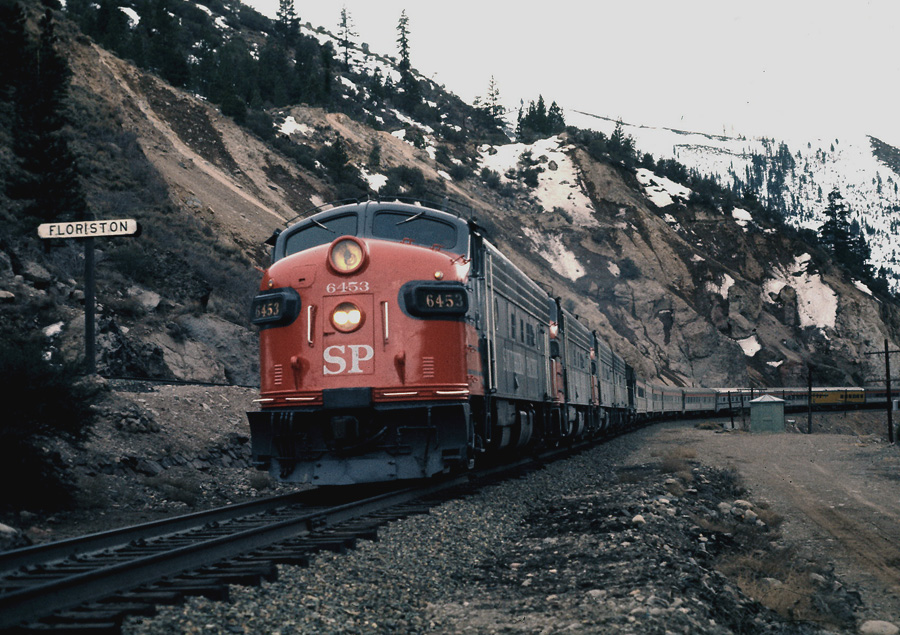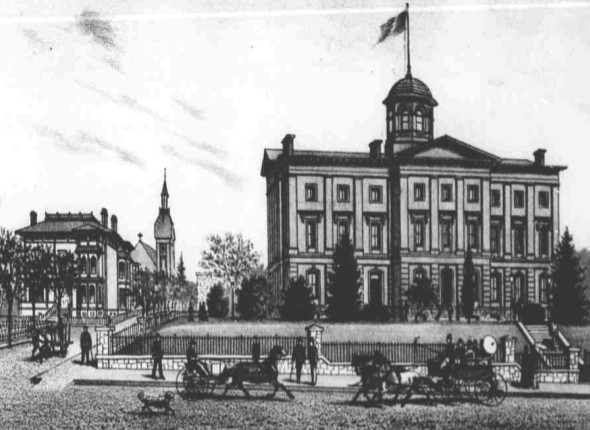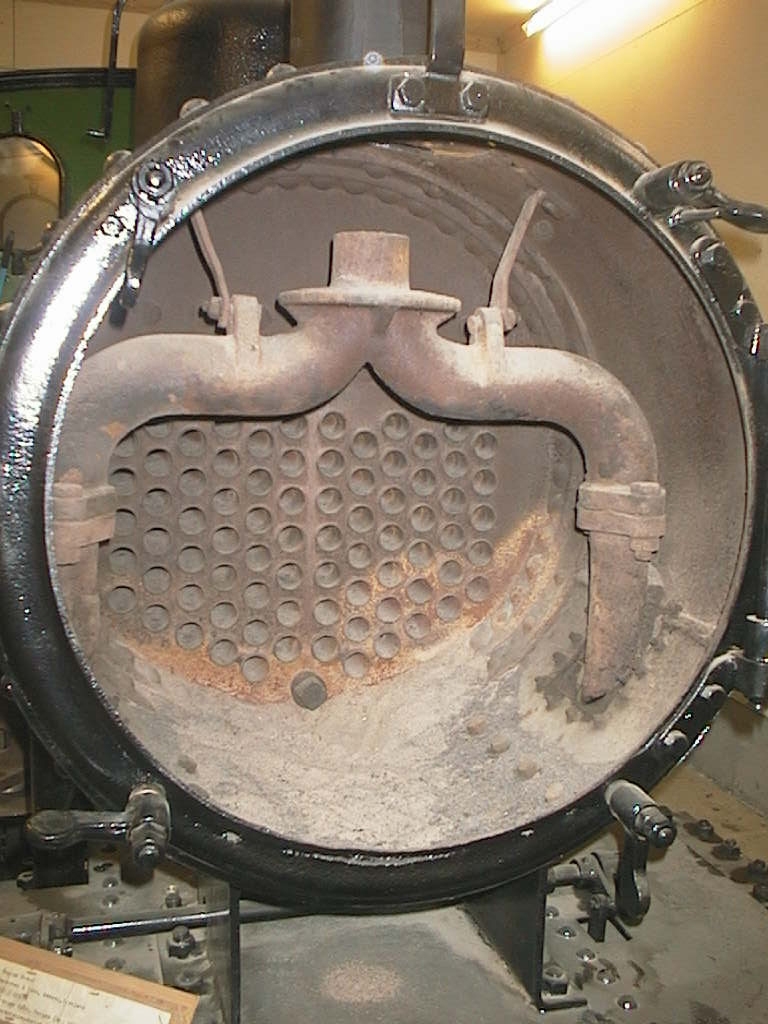|
GS-4
The Southern Pacific GS-4 is a class of semi-streamlined 4-8-4 "Northern" type steam locomotive operated by the Southern Pacific Railroad (SP) from 1941 to 1958. A total of 28 locomotives were built by Lima Locomotive Works (LLW) in Lima, Ohio, with the first batch of 20 built between March and May 1941, and the second batch of eight built between March and April 1942. The initials ''GS'' stands for ''Golden State'' or ''General Service''. The GS-4s served as the primary motive power of SP's famous '' Coast Daylight'' passenger train between San Francisco and Los Angeles, California, via San Luis Obispo, California. They also hauled the '' San Joaquin Daylight'' and the overnight ''Lark'', both of which ran between San Francisco and Los Angeles as well, although the former ran via the San Joaquin Valley and Tehachapi Pass. Some of the GS-4s were first assigned to haul troop trains during World War II. In the mid-1950s, SP began to modernize their mainline passenger trains with ... [...More Info...] [...Related Items...] OR: [Wikipedia] [Google] [Baidu] |
4-8-4
Under the Whyte notation for the classification of steam locomotives, represents the wheel arrangement of four leading wheels on two axles, eight powered and coupled driving wheels on four axles and four trailing wheels on two axles. The type was first used by the Northern Pacific Railway, and initially named the Northern Pacific, but railfans and railroad employees have shortened the name since its introduction. It is most-commonly known as a Northern. Overview Development The wheel arrangement was a progression from the 4-8-2, Mountain type and, like the 2-8-4, Berkshire and 4-6-4, Hudson types, an example of the "Super Power" concept in steam locomotive design that made use of the larger Firebox (steam engine), firebox that could be supported by a four-wheel trailing truck, which allowed greater production of steam. The four-wheel leading truck gave stability at speed and the eight driving wheels gave greater adhesion. The type evolved in the United States soon after ... [...More Info...] [...Related Items...] OR: [Wikipedia] [Google] [Baidu] |
Southern Pacific 4449
Southern Pacific 4449, also known as the Daylight, is the only surviving example of the Southern Pacific Railroad's GS-4 class of 4-8-4 ''Northern'' type steam locomotives and one of only two streamlined GS class locomotives preserved, the other being GS-6 No. 4460 at the National Museum of Transportation in St. Louis, Missouri. GS is an abbreviation of ''General Service'' or ''Golden State'', the latter of which was a nickname for California, where the locomotive was used to operate in revenue service. No. 4449 was built by Lima Locomotive Works (LLW) in Lima, Ohio for the Southern Pacific Railroad on May 20, 1941; it received SP's signature red-and-orange ''Daylight'' paint scheme for the passenger trains of the same name which it hauled for most of its service career. No. 4449 was retired from revenue service on October 2, 1957, and donated to the City of Portland, Oregon in 1958. The city then put the locomotive on static display near Oaks Amusement Park at "Oaks Pion ... [...More Info...] [...Related Items...] OR: [Wikipedia] [Google] [Baidu] |
Southern Pacific Transportation Company
The Southern Pacific (or Espee from the railroad initials) was an American Class I railroad network that existed from 1865 to 1996 and operated largely in the Western United States. The system was operated by various companies under the names Southern Pacific Railroad, Southern Pacific Company and Southern Pacific Transportation Company. The original Southern Pacific began in 1865 as a land holding company. The last incarnation of the Southern Pacific, the Southern Pacific Transportation Company, was founded in 1969 and assumed control of the Southern Pacific system. The Southern Pacific Transportation Company was acquired in 1996 by the Union Pacific Corporation and merged with their Union Pacific Railroad. The Southern Pacific legacy founded hospitals in San Francisco, Tucson, and Houston. In the 1970s, it also founded a telecommunications network with a state-of-the-art microwave and fiber optic backbone. This telecommunications network became part of Sprint, a company ... [...More Info...] [...Related Items...] OR: [Wikipedia] [Google] [Baidu] |
Southern Pacific Railroad
The Southern Pacific (or Espee from the railroad initials) was an American Railroad classes#Class I, Class I Rail transport, railroad network that existed from 1865 to 1996 and operated largely in the Western United States. The system was operated by various companies under the names Southern Pacific Railroad, Southern Pacific Company and Southern Pacific Transportation Company. The original Southern Pacific began in 1865 as a land holding company. The last incarnation of the Southern Pacific, the Southern Pacific Transportation Company, was founded in 1969 and assumed control of the Southern Pacific system. The Southern Pacific Transportation Company was acquired in 1996 by the Union Pacific Corporation and merged with their Union Pacific Railroad. The Southern Pacific legacy founded hospitals in San Francisco, Tucson, Arizona, Tucson, and Houston. In the 1970s, it also founded a telecommunications network with a state-of-the-art microwave and fiber optic backbone. This telec ... [...More Info...] [...Related Items...] OR: [Wikipedia] [Google] [Baidu] |
Lark (train)
The ''Lark'' was an overnight passenger train of the Southern Pacific Company on the run between San Francisco and Los Angeles. It became a streamliner in 1941 and was discontinued on April 8, 1968. The ''Lark'' ran along the same route as the '' Coast Daylight'' and was often pulled by a locomotive wearing the famous ''Daylight'' paint scheme of orange, red, and black. Overview After 1941, Southern Pacific trains 75 (northbound) and 76 (southbound) were deluxe all-room Pullman (sleeping car) trains between San Francisco's Third and Townsend Depot and Los Angeles's Union Station. The last two cars in each consist of the ''Lark'' ran along the east side of San Francisco Bay to Oakland and were known as the ''Oakland Lark''. The ''Lark'' was to overnight travelers what the '' Morning Daylight'' and '' Noon Daylight'' were to day travelers in the San Francisco–Los Angeles market: safe, reliable, deluxe transportation. The ''Lark'' was the only streamlined all-room sleeping ... [...More Info...] [...Related Items...] OR: [Wikipedia] [Google] [Baidu] |
Coast Daylight
The ''Coast Daylight'', originally known as the ''Daylight Limited'', was a passenger train on the Southern Pacific Railroad (SP) between Los Angeles and San Francisco, California, via SP's Coast Line. It was advertised as the "most beautiful passenger train in the world," carrying a particular red, orange, and black color scheme. The train operated from 1937 until 1974, being retained by Amtrak in 1971. Amtrak merged it with the ''Coast Starlight'' in 1974. History Southern Pacific Southern Pacific introduced the ''Daylight Limited'' on April 28, 1922. The train operated on a 13-hour schedule between the Third and Townsend Depot in San Francisco and Central Station in Los Angeles, running on Fridays and Saturdays only. In 1922 and 1923, the train ran seasonally, beginning in April and ending in November. Daily operation began in July 1923. The SP shortened the running time to 12 hours for the 1924 season. Until the late 1920s, it made no intermediate stops (except fo ... [...More Info...] [...Related Items...] OR: [Wikipedia] [Google] [Baidu] |
Southern Pacific GS-3 Class
The GS-3 was a class of streamlined 4-8-4 "Northern" type steam locomotive operated by the Southern Pacific Railroad (SP) from 1938 to 1957. A total of fourteen were built by the Lima Locomotive Works, numbered 4416 through 4429. GS stands for "Golden State" or "General Service." History The popularity of the Southern Pacific Coast Daylight trains was overwhelming and prompted the Southern Pacific to initiate plans to introduce several new streamlined, lightweight trains: the '' Noon Daylight'', the '' San Joaquin Daylight'', and the ''Lark''. A second order for 14 additional Daylight engines was placed with Lima Locomotive Works. All engines were set up upon delivery at El Paso, Texas. Number 4416 was the first and was set up on November 3, 1937. Number 4429 was last and set up on December 30, 1937. The GS-3 had an appearance similar to the GS-2. They featured a silver smokebox with a cone-shaped single headlight casing, skyline casing on the top of the boiler, skirting on t ... [...More Info...] [...Related Items...] OR: [Wikipedia] [Google] [Baidu] |
Oregon Rail Heritage Center
The Oregon Rail Heritage Center (ORHC) is a railway museum in Portland, Oregon, Portland, Oregon. Along with other rolling stock, the museum houses three steam locomotives owned by the City of Portland: Southern Pacific 4449, Spokane, Portland and Seattle 700, Spokane, Portland & Seattle 700, and OR&N 197, Oregon Railroad & Navigation Co. 197, the first two of which are restored and operable. The center opened to the public on September 22, 2012. The project to establish the center was led by the Oregon Rail Heritage Foundation (ORHF), a non-profit organization, which was renamed from the Oregon Heritage Steam Foundation in 2002. The non-profit Oregon Steam Heritage Foundation was formed in 2000. The museum site is in Neighborhoods of Portland, Oregon#Southeast, Southeast Portland.ORHF Home page Retrieved September 28, 2012. Background [...More Info...] [...Related Items...] OR: [Wikipedia] [Google] [Baidu] |
Portland, Oregon
Portland ( ) is the List of cities in Oregon, most populous city in the U.S. state of Oregon, located in the Pacific Northwest region. Situated close to northwest Oregon at the confluence of the Willamette River, Willamette and Columbia River, Columbia rivers, it is the county seat of Multnomah County, Oregon, Multnomah County, Oregon's most populous county. Portland's population was 652,503, making it the List of United States cities by population, 28th most populous city in the United States, the sixth most populous on the West Coast of the United States, West Coast, and the third most populous in the Pacific Northwest after Seattle and Vancouver. Approximately 2.5 million people live in the Portland metropolitan area, Oregon, Portland metropolitan area, making it the List of metropolitan statistical areas, 26th most populous in the United States. Almost half of Oregon's population resides within the Portland metro area. Named after Portland, Maine, which is itself named aft ... [...More Info...] [...Related Items...] OR: [Wikipedia] [Google] [Baidu] |
Mars Light
Mars Lights are signal-safety lights used in the United States and built by Mars Signal Light Company for railroad locomotives and firefighting apparatus. Mars Lights used a variety of means to cause the light to oscillate vertically, horizontally, or both, to catch the attention of motorists and pedestrians. Mars lights were developed by Jerry Kennelly, a Chicago firefighter who realized that oscillating lamps would benefit fire departments and railroads. He performed an operational test with the Chicago and North Western Transportation Company, Chicago and North Western railroad in 1936, and Mars Lights began appearing on locomotives in the later 1930s. Tri Lite, Inc. announced its acquisition of the Mars Signal Light Company, on January 23, 1991. Tri Lite still manufactures many of the traditional Mars Lights under the Tri Lite Mars brand. The company has since updated the Mars "888" Traffic Breaker with energy-efficient light-emitting diode, LEDs replacing the earlier sealed b ... [...More Info...] [...Related Items...] OR: [Wikipedia] [Google] [Baidu] |
Freight Train
A freight train, also called a goods train or cargo train, is a railway train that is used to carry cargo, as opposed to passengers. Freight trains are made up of one or more locomotives which provide propulsion, along with one or more railroad cars (also known as wagons) which carry freight. A wide variety of cargoes are carried on trains, but the low friction inherent to rail transport means that freight trains are especially suited to carrying bulk and heavy loads over longer distances. History The earliest recorded use of rail transport for freight was in Babylon, circa 2200 B.C.E. This use took the form of wagons pulled on wagonways by horses or even humans. Locomotives Freight trains are almost universally powered by locomotives. Historically, steam locomotives were predominant, but beginning in the 1920s diesel and electric locomotives displaced steam due to their greater reliability, cleaner emissions, and lower costs. Freight cars Freight trains carry cargo i ... [...More Info...] [...Related Items...] OR: [Wikipedia] [Google] [Baidu] |
Smokebox
A smokebox is one of the major basic parts of a steam locomotive exhaust system. Smoke and hot gases pass from the firebox through tubes where they pass heat to the surrounding water in the boiler. The smoke then enters the smokebox, and is exhausted to the atmosphere through the chimney (or funnel). Early locomotives had no smokebox and relied on a long chimney to provide natural draught for the fire but smokeboxes were soon included in the design for two specific reasons. Firstly and most importantly, the blast of exhaust steam from the cylinders, when directed upwards through an airtight smokebox with an appropriate design of exhaust nozzle, effectively draws hot gases through the boiler tubes and flues and, consequently, fresh combustion air into the firebox. Secondly, the smokebox provides a convenient collection point for ash and cinders ("char") drawn through the boiler tubes, which can be easily cleaned out at the end of a working day. Without a smokebox, all char m ... [...More Info...] [...Related Items...] OR: [Wikipedia] [Google] [Baidu] |








